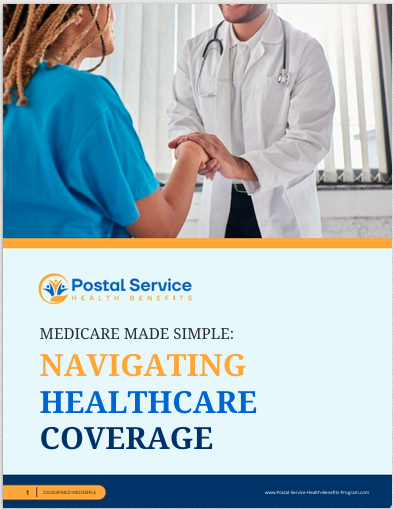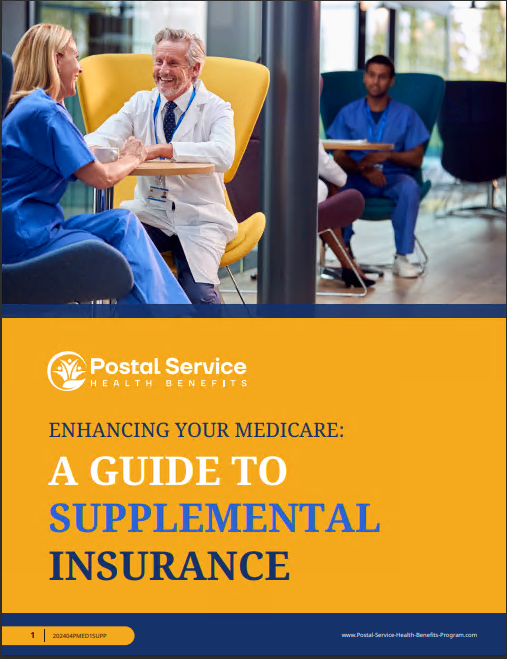Key Takeaways:
-
Medicare Part D coverage is an essential aspect of your healthcare as a Postal Service Health Benefits (PSHB) member, but understanding how it integrates with your PSHB plan is crucial for managing costs and benefits.
-
Knowing the enrollment process, potential out-of-pocket expenses, and available prescription drug coverage options can help you make informed decisions about your Medicare Part D plan.
Understanding Medicare Part D as a PSHB Member
If you’re a Postal Service Health Benefits (PSHB) member, you already have access to a range of health insurance options tailored for postal employees and retirees. But when it comes to prescription drug coverage, things can get a little more complicated—especially if you’re eligible for Medicare. Medicare Part D plays a key role in covering prescription medications, but how does it work alongside your PSHB plan? Here’s what you need to consider.
1. How Medicare Part D Works with Your PSHB Plan
As a PSHB member, you already have prescription drug coverage through your health plan. However, if you become eligible for Medicare, you may need to determine whether enrolling in a Medicare Part D plan makes sense for you.
Does PSHB Offer Creditable Coverage?
One of the most important things to check is whether your PSHB plan provides creditable prescription drug coverage—meaning it’s expected to pay, on average, as much as standard Medicare Part D coverage. If your PSHB plan is considered creditable, you might not need a separate Medicare Part D plan unless you want additional coverage.
If your PSHB plan does not offer creditable drug coverage, you may face late enrollment penalties if you don’t sign up for Medicare Part D when you first become eligible.
Medicare Part D vs. PSHB Drug Coverage
-
PSHB prescription coverage varies by plan but typically includes a formulary (list of covered drugs), copayments, and a structure similar to Medicare Part D.
-
Medicare Part D has its own cost-sharing structure, including an annual deductible, initial coverage phase, and catastrophic coverage once you reach out-of-pocket spending limits.
-
Some PSHB plans automatically enroll Medicare-eligible members into a Medicare Part D Employer Group Waiver Plan (EGWP), which offers benefits similar to a standalone Part D plan but is administered through the PSHB program.
2. Enrollment Timelines and How to Avoid Penalties
Timing is everything when it comes to Medicare Part D enrollment. Missing deadlines can lead to penalties that increase your premium permanently.
When Should You Enroll?
-
Initial Enrollment Period (IEP): Starts three months before you turn 65 and lasts for seven months. If you’re still working and covered under a PSHB plan, you may not need to enroll immediately.
-
Special Enrollment Period (SEP): If you delay enrolling because you have creditable PSHB coverage, you get a two-month SEP after losing that coverage.
-
Annual Enrollment Period (AEP): Runs from October 15 to December 7 each year. If you need to switch or add Part D coverage, this is when you can do it.
-
Medicare Advantage Open Enrollment Period (MA OEP): If you’re enrolled in a Medicare Advantage plan with drug coverage, you can make changes between January 1 and March 31 each year.
Late Enrollment Penalties
If you don’t sign up for Medicare Part D when first eligible and go 63 consecutive days or more without creditable coverage, you’ll face a late enrollment penalty. This penalty is calculated as 1% of the national base beneficiary premium for each month you went without coverage and is added to your Part D premium permanently.
3. Understanding Your Out-of-Pocket Costs
Medicare Part D isn’t just about whether you enroll—it’s also about how much you’ll pay. Here’s what you should expect in terms of costs:
Cost Phases in Medicare Part D
Medicare Part D has several cost phases:
-
Deductible Phase: You pay the full cost of prescriptions until you meet your plan’s deductible (capped at $590 in 2025).
-
Initial Coverage Phase: You pay a copayment or coinsurance until your total drug costs reach $5,030 in 2025.
-
Catastrophic Coverage Phase: Once your out-of-pocket spending reaches $2,000, you pay nothing for covered prescriptions for the rest of the year. This is a major benefit introduced in 2025, replacing previous catastrophic cost-sharing rules.
Additional Cost Factors
-
Formulary Restrictions: Medicare Part D and PSHB plans have different formularies, so you need to ensure your medications are covered under your chosen plan.
-
Tiered Pricing: Drugs are categorized into tiers, with generic drugs generally costing less than brand-name or specialty medications.
-
Preferred vs. Non-Preferred Pharmacies: Using a preferred pharmacy can reduce your copayments under both PSHB and Medicare Part D plans.
4. Maximizing Your Benefits and Avoiding Unnecessary Costs
Even if you already have PSHB drug coverage, you may want to consider enrolling in Medicare Part D to maximize benefits and reduce long-term costs. Here are some ways to get the most out of your coverage:
Coordinate Benefits with PSHB and Medicare Part D
If you enroll in Medicare Part D while keeping your PSHB plan, make sure your benefits are coordinated correctly. Some PSHB plans wrap around Medicare Part D, offering additional cost savings.
Use Medicare’s Extra Help Program if Eligible
The Extra Help program assists beneficiaries with limited income in covering Medicare Part D costs, including premiums, deductibles, and copayments.
Review Plans Annually
Medicare Part D and PSHB plans change from year to year. Reviewing your options during Medicare Open Enrollment (October 15 – December 7) ensures you get the best coverage at the lowest cost.
Utilize Mail-Order Pharmacies
Many PSHB and Medicare Part D plans offer lower-cost mail-order prescriptions, which can save money on maintenance medications.
Making the Right Choice for Your Medicare Part D Coverage
If you’re a PSHB member nearing Medicare eligibility, evaluating your prescription drug coverage is essential. Whether you choose to rely solely on your PSHB plan or enroll in Medicare Part D, understanding the integration of these benefits ensures you avoid unexpected costs and penalties. Reviewing your plan’s formulary, costs, and pharmacy options annually can help you maximize your savings and maintain access to the medications you need.
To explore your Medicare Part D options and see how they align with your PSHB benefits, get in touch with a licensed agent listed on this website. They can provide expert guidance to help you make the best choice for your prescription drug coverage.






